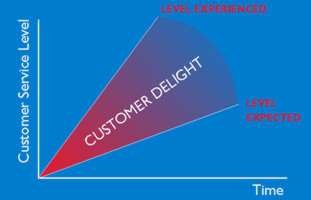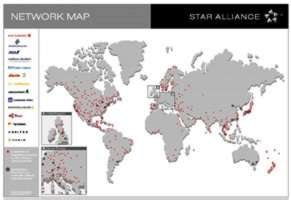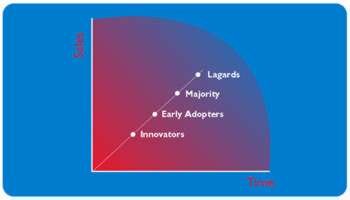Today we live in a global community as global citizens where we have become increasingly conscious about sharing the planet with people from other cultures and backgrounds. In this global community where so many technologies are shared, distances and time barriers have shrunk. Not only can we use information technologies to e-mail, phone or fax friends, family and colleagues in other parts of the world, we can also use reliable and regular travel links to visit them, covering vast distances in a matter of hours.
Whereas in the past travelling by air was, for many people, an experience more often than not associated with an annual family holiday, today air travel has become a way of life both for business and leisure. One frequently quoted estimate is that demand for air travel will double in the next 20 years. As a result more and more people do not just need regular air travel, but also the type of travel that meets their particular needs best. For example, unlike the manufacture of tangible goods such as shampoo or bread that have clear uses, providing travel opportunities is more sophisticated as it involves providing customer service to match the expectations of travel users.
This case study focuses upon how United Airlines uses customers’ motivations for different types of services to segment the market and improve its competitiveness.

United Airlines
United Airlines was formed in 1927 from four airlines – Boeing Airplane Company, National Air Transport, Varney and Pacific Air Transport. From its roots as a USA domestic carrier, United Airlines expanded into international routes to become the world’s second largest air carrier. With hubs in Chicago, Denver, Los Angeles, San Francisco, Washington D.C. and key international gateways in Tokyo, London, Frankfurt, Miami and Toronto, United flies to 117 destinations in 26 countries. These schedules are obviously subject to change. United employs more than 80,000 people worldwide and carries more than 210,000 passengers every day. Its customers have access to more than 729 destinations around the world through Star Alliance, the leading global airline network.

By offering a range of customer-focused products and services, United has become an industry innovator. In a service-based industry, customers and the services they require are at the centre of any marketing strategy. Besides offering convenient scheduling throughout its domestic and international routes, United seeks to attract high-yield customers and to earn their preference and loyalty. It does this by providing a comprehensive network and an attractive frequent-flyer programme with enhanced product/service offerings.
The external business environment
The need for segmentation

Within markets, not all customers are the same – they have different tastes and want different things. As a result, particular markets can usually be further divided into discrete segments. Each group consists of people with similar needs and requirements. The organisation then develops strategies that are closely aimed at satisfying each customer group. This process is known as market segmentation.
Through segmentation, United Airlines can identify market opportunities and meet its marketing objectives. Segmentation gives an airline a better understanding of its customers, the services they require, where and when they want those services and how they would prefer to pay for them.
United Airlines segments its market so that it can:
- identify consumer needs and the proportion of customers who have those needs
- develop products and prices to meet these needs
- target communications at customers within each segment
- allocate funds to support and develop each market opportunity.
Market segmentation therefore enables United Airlines to maximise the efficiency of its marketing efforts by moving the company to use a different strategy for each market segment.
The base for segmentation
Segmentation involves dividing up a whole market so that products and services can then be developed for each part of the market. Some companies divide up a market geographically, while others divide markets according to demographic details such as age, gender or occupation. The criteria used to divide the market is known as the segmentation base.

United Airlines uses a form of psychographic segmentation to divide up the market for its services. This involves identifying the social class, lifestyles, opinions, interests, behaviour and attitudes of customers. Modern communication systems play a major part in this information-gathering exercise. With the help of questionnaires, United Airlines classifies its customers by their motivations. For example, some customers choose United Airlines because of price, while others choose the airline because of schedules, frequent flyer programmes or other forms of service.
For United Airlines, successful segmentation enables targeting to take place. Targeting provides the focus for the activities of the business.
It enables promotions and services to be aimed only at those who are most likely to respond positively to them. Passengers are communicated with through email which is becoming a focus for closely-targeted marketing.

The United Airlines business model can be compared to the classic 80:20 rule in Pareto’s Analysis. Based on experience of the airline industry, the model assumes that, for airlines offering a high level of service, 80of profit comes from 20of customers. The profit-generating customers are the ones who are prepared to pay a premium price for a premium service. They are the ones that the airline most needs to attract.
Global segmentation and growth strategies
There are clear differences between domestic segments and global segments. For example, international segments might differ by hours rather than minutes in the US, and the cost of domestic travel is also significantly lower. In global segments United Airlines identifiednine motivational segment profiles. These are:
- Global executives: face frequent business travel and enjoy it because of the high level of service.
- Schedule optimizers: must reach their destination by a certain time and select their flights accordingly.
- Corporate troopers: use an airline and a class of travel that has been chosen for them by their company.
- Mile accumulators: go out of their way to take flights that will build up their air miles entitlement.
- Reluctant travellers: do not enjoy travel and look for services that will make the experience bearable e.g. special privileges and frequent flyer programmes.
- Tour takers: want everything arranged for them.
- Quality vacationers: treat the travel as part of the holiday experience and so fly with carriers that provide superior services.
- Travel seekers: love to travel and seek out new experiences. They want travel to be comfortable.
- Frugal flyers: seek out the lowest cost carriers, but still expect their flight experience to be a good one.
Having identified these segments, United Airlines had to decide on which ones to concentrate. One key factor was the potential of each sector to generate not only revenue but also profit. In some segments, such as global executives, the customer profile was clear-cut regarding who they were and what they required so compiling a package of services for them was comparatively straightforward. However, some segments were less responsive to key benefits and it proved harder to identify precisely what they were most looking for.
With global executives as the target market, the airline also developed packages for schedule optimizers, mile accumulators, travel seekers, corporate troopers and quality vacationers.
Meeting customer needs
In an industry in which the service provided is a major form of competition, the most successful airlines will be those who most accurately identify what different segments of their customer base want and are willing to pay for, and then provide it, usually within one aircraft. The end product is complex. For example, United Economy International provides services such as multi-course meals based upon consultation with celebrity chefs, brand name beverages, multi-lingual flight attendants, Mileage Plus¨ programmes and entertainment systems. The services offered by United Business International and United First International include built-in entertainment centres and a greater amount of private space.
The service life-cycle
In general, depending on the size of the company, service providers can modify their offer more quickly than manufacturers can alter their products. United Airlines’ ability to fine-tune its services rapidly in response to changing customer needs enables it to retain its market position. Growth strategies also depend on a capacity for ‘rapid response’.
Service adjustments may involve, for example:
- expanding the range of services for some segments
- modifying how a service is delivered
- re-positioning services in chosen segments
- differentiating services even further from those of competitors
- finding untapped markets for services.

Like the product life-cycle, the service life-cycle needs constant injections of life to extend the growth phase and increase the profitability of the organisation.
Conclusion
United Airlines recognises that airlines need to be able to respond rapidly to changing customer requirements in what is a complex service industry. The company understands the role of technology in enabling it to amass the data it requires about customer requirements. In a heavily regulated and increasingly competitive market place with good prospects for long term growth, United Airlines successfully uses market segmentation to target distinct customer groups from whom growth opportunities can be developed.
